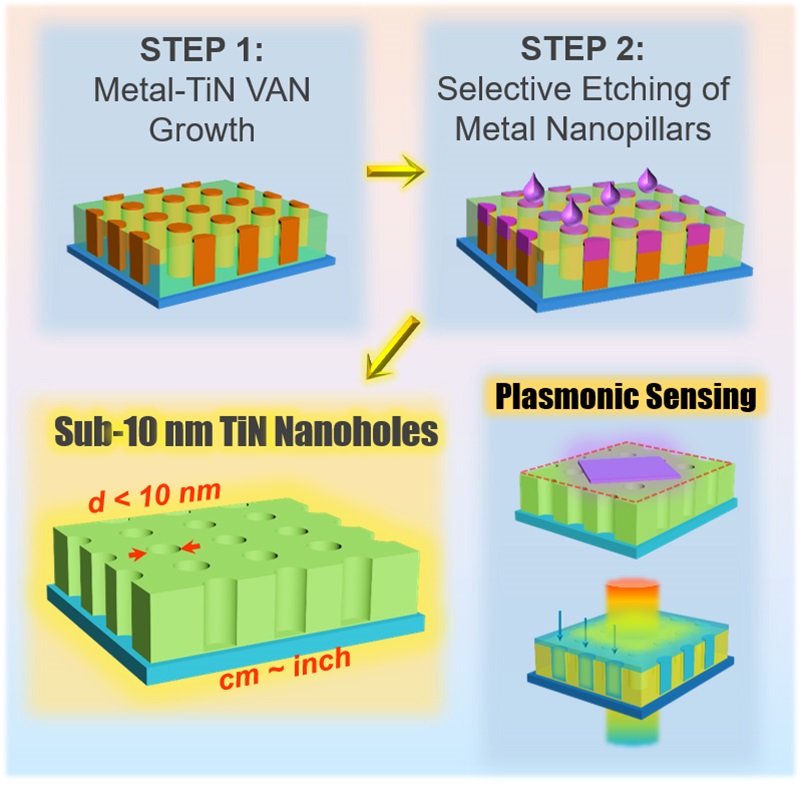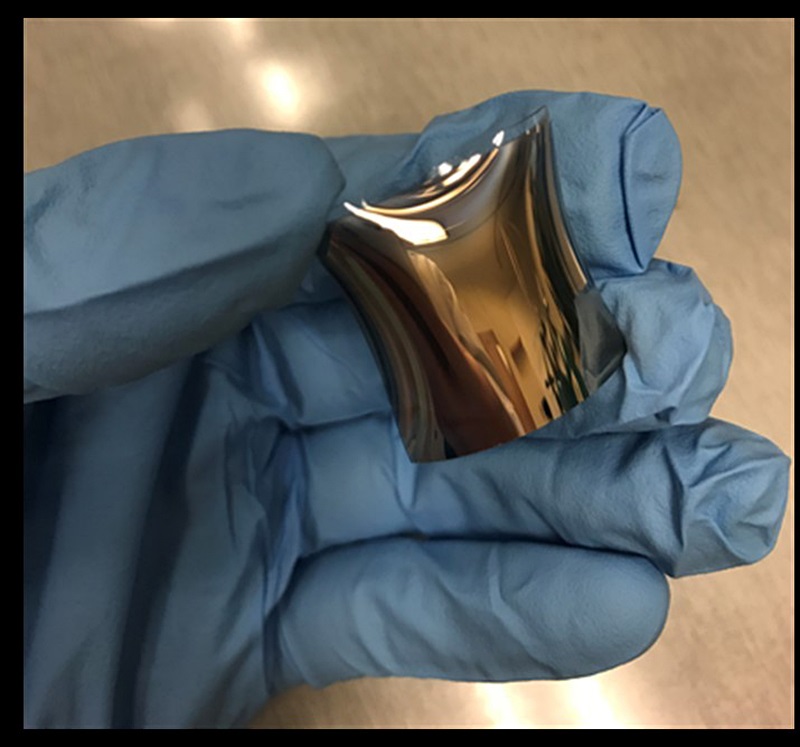September 15, 2020
Writer: Chris Adam
WEST LAFAYETTE, Ind. – New patented technologies from engineers at Purdue University are designed to improve the performance of handheld optical sensors used for food safety detection and water quality analysis.
The Purdue researchers developed a hybrid plasmonic thin-film, two-phase vertically aligned nanocomposite (VAN) with controllable metal pillar density with tunable diameters.
“Metamaterials as plasmonic nanoresonators with novel functionalities are attractive for various device applications including nanophotonic circuits, biomedical sensors, photocatalysis technologies and photovoltaics devices,” said Haiyan Wang, the Basil S. Turner Professor of Engineering in Purdue’s College of Engineering. “Through tailoring material and geometrical parameters of such nanostructured building blocks, light–matter interactions can be manipulated for selective responses.”
The Purdue team also developed a framework for processing large-scale nanohole frameworks. Wang said each of the technologies can be used with optical sensing systems.
“Our innovations provide exciting opportunities for optical sensing,” Wang said. “Our thin film technologies provide new materials platforms to manipulate light and matter interactions for enhanced optical sensing sensitivity for applications such as food safety, biomedical sensing and photonic devices.”
 Researchers at Purdue developed a hybrid plasmonic thin film two-phase vertically aligned nanocomposite (VAN) with controllable metal pillar density with tunable diameters. (Image provided)
Researchers at Purdue developed a hybrid plasmonic thin film two-phase vertically aligned nanocomposite (VAN) with controllable metal pillar density with tunable diameters. (Image provided)
Wang said that compared to other single- or double-phase plasmonic materials, this technology is relatively simple as it is a one-step growth method and can produce two-phase nanocomposites with high crystalline quality that enables superior and reliable material performance.
“This technology is flexible and tunable in terms of material selectivity, density of secondary phase and nanopillar dimensions, and the film can be scaled up and integrated with other thin film devices as desired,” Wang said.
This work is currently funded by the National Science Foundation.
The innovators worked with the Purdue Research Foundation Office of Technology Commercialization to patent their technologies.













